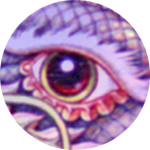Political reformer, master artist
Kenneth Baker, Chronicle Art Critic
Sunday, August 16, 2009
Former Prime Minister of Japan Morihiro Hosokawa has a life story with no parallel in American - or Japanese - politics.
Descendant of a once-powerful clan of feudal warlords, he rose in the early 1990s from the relative obscurity of a rural prefectural governorship to form a political coalition that propelled him into the prime minister's post.
After a brief, dazzling tenure, marked by reforms of lasting influence, he found himself marginalized again, happily.
Today, Hosokawa lives secluded in Yugawara, an hour by train from Tokyo, possibly less famous as a political figure than as a ceramic artist and overseer of the Eisei Bunko, the Tokyo museum devoted to his family's collection of Japanese art.
The Asian Art Museum has drawn its current exhibition, "Lords of the Samurai" (through Sept. 20), from the Hosokawa family collection. (The show's second rotation of light-sensitive objects went on view this week.)
The show includes ceramics made by the former prime minister. Assisted by curator and fluent Japanese speaker Melissa Rinne, I spoke with Hosokawa when he visited San Francisco earlier this summer.
Q: How do you feel about the inclusion of your own work in the show?
A: Originally I had planned only to bring historical works from the collection, but the (Asian Art Museum) director was adamant that the exhibition show the continuity through every generation of the family. So I agreed to put my work in the show.
Q: Have there been practicing artists in every generation?
A: No, but every generation did have a very high regard for and reverence for the arts, including the tea ceremony.
Q: Was there anything in your personal background that foreshadowed your turn to ceramics?
A: No, not a thing. I had no interest in ceramics, or in art really, until 10 years ago.
My grandfather and father were both very well-known collectors. But even today I'm not interested in collecting per se. I myself don't collect.
Q: Was there a point at which you became responsible for the family collection?
A: A few years ago my father passed away and at that point I became chairman of the family collection. ... Only then did I begin to think seriously about preserving it.
Q: Are you still involved in politics in Japan?
A: No.
Q: What motivated the radical change you made?
A: At 53, I had the intention of retiring as governor of Kumamoto prefecture to a hermetic life, 'to till the fields when the sun shines and engage in reading when it rains,' as an old Japanese phrase says. But I went ahead to establish a new political party, leading to my becoming prime minister.
Q: Was it difficult for a man so prominent in Japan to become artistic apprentice to someone else?
A: In fact my family, my friends, everybody was quite shocked at my decision to study under a teacher. And my teacher is known as something of a wild man. For a year and a half, I had very intensive training from 6 in the morning to 7 at night, working at the wheel all day.
In Japan, there's a traditional apprenticeship of not being taught, but of just sitting next to the master at the wheel. You learn by observing, by feeling. My teacher would say only two things to me during that time, either 'you fool' or 'throw that one away.'
My teacher was, in fact, 10 years younger than I. There are few teachers that much younger who would be able to look upon a man of my prominence and say things like that, for which I'm very grateful. If I had gone to most teachers, I would have been praised and coddled, and wouldn't have reached the level of artistry that I have.
Q: Are you concerned now about flattery of your work?
A: Actually, no. I simply try to make better tea bowls and don't take much account of what people say. I do have the confidence now to say that I'm the best raku potter in Japan.
Q: Are there any other political figures or former ones in Japan who have turned to the artistic life?
A: No.
Q: Can you describe your working day?
A: I wake up about 5:30. I have a small vegetable patch and taking care of that helps maintain my health.
We've been talking only about ceramics, but for the last six months, after many years of ink painting, I've been doing a lot of oil painting, both realistic and abstract. Most of my friends in Japan don't know this, but I hope to have an exhibition next year if I have enough work ready.
Q: Are you under pressure to return to politics in Japan?
A: A lot of people make requests, but I try to stay out of those circles.
Q: If you thought it necessary to learn oil painting better by living outside Japan, would you do that?
A: I'm not interested in going to study elsewhere, but I do go other places to sketch. I've been to China several times to sketch and hope to go to Europe also.
I was invited by the French government to go to Provence to work for a year, but because I do not speak French and the glazes and clays are all different there, I declined.
Q: If others approached you to learn ceramics, what would your answer be?
A: I would be very receptive. Many of the senior ceramic artists in Japan do not allow people to observe their whole process, but I do my work in a very intuitive way. I don't use thermometers in the kiln, for instance, but judge heat by the color of the flame. So it's not easy for people to steal from me.
E-mail Kenneth Baker at
kennethbaker@sfchronicle.com.




 Reply With Quote
Reply With Quote





